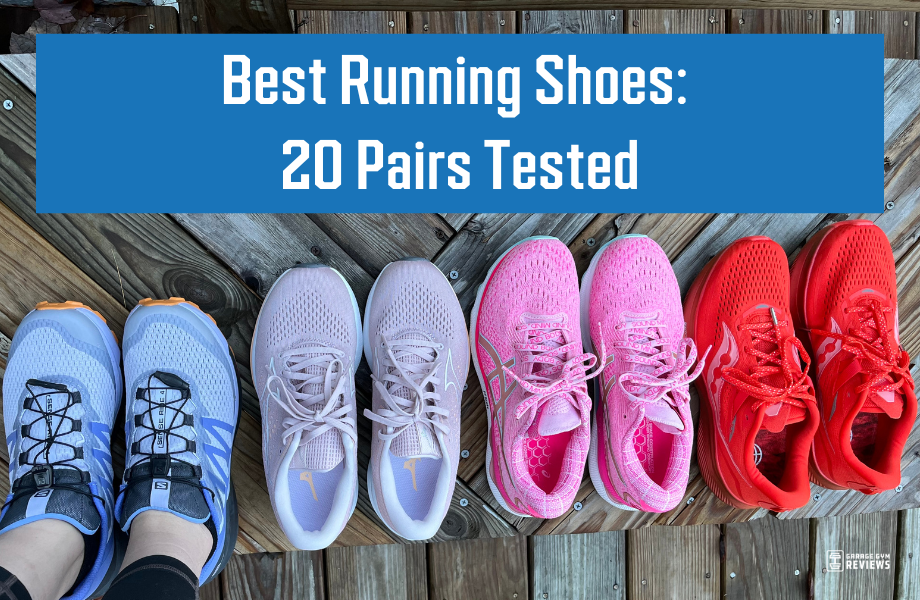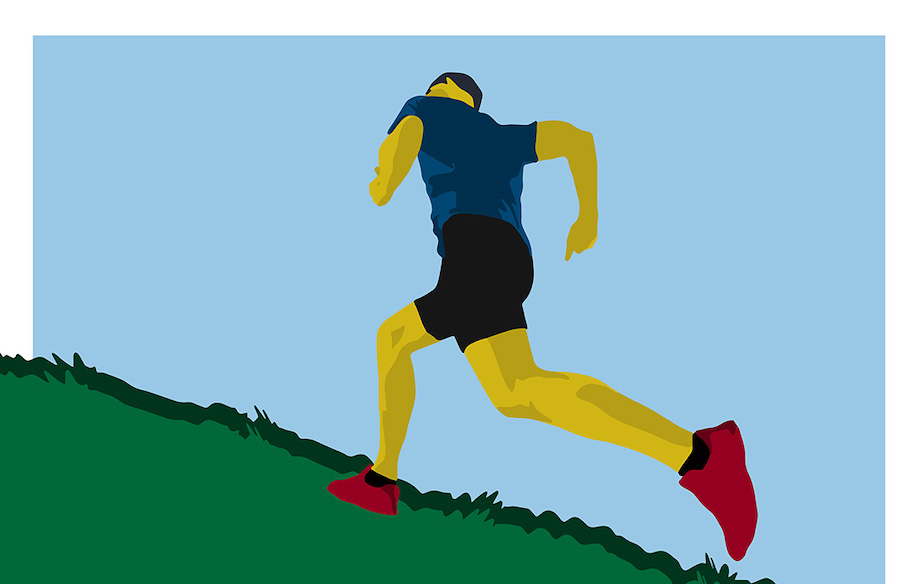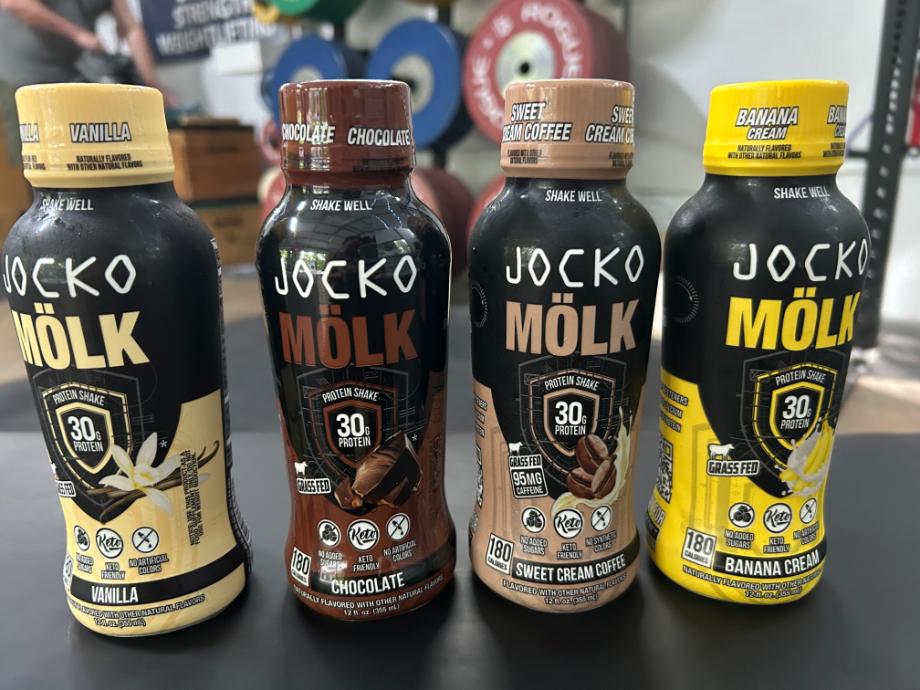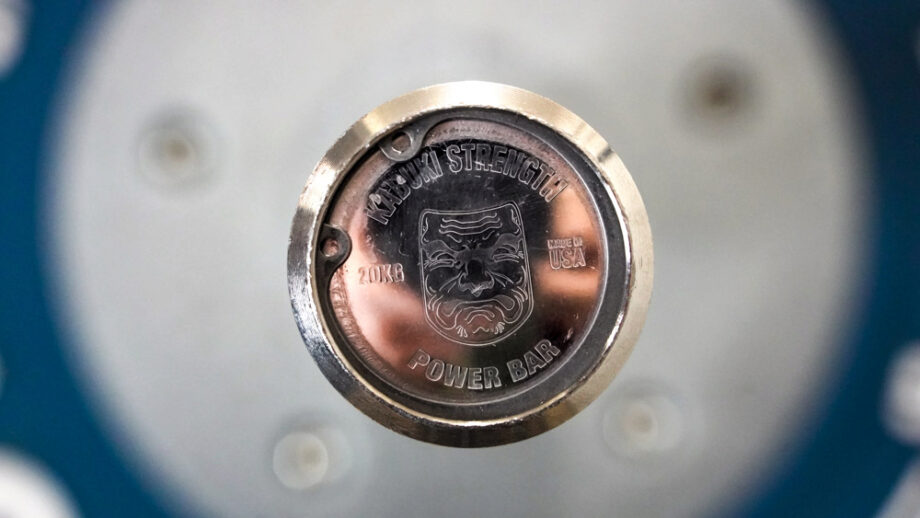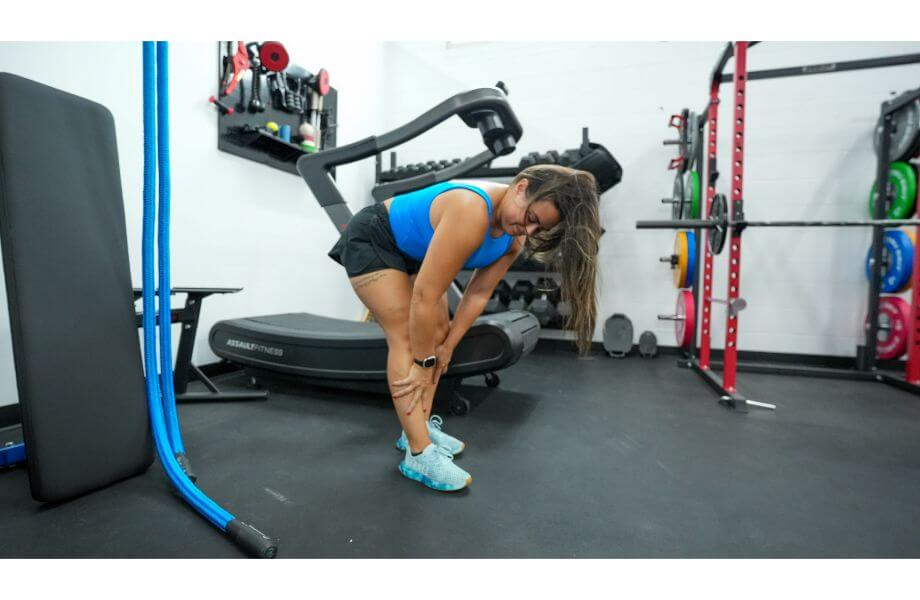If you’re ready to chase those runner’s high endorphins, you need the right running gear. Well, you really just need a pair of really great running shoes to get started, and we can help with that.
Over the past several months, the Garage Gym Reviews team tested 20 pairs of running shoes, from rugged trail runners to lightweight shoes built for speed. We took each pair through different types of terrain and weather conditions (yes, we ran in the rain for you) to come up with this list of the seven best running shoes.
The Garage Gym Reviews team includes certified personal trainers, CrossFit Level 1 Trainers, and nutrition coaches who have run a lot of miles, and gone through plenty of running shoes. Many of us incorporate running into our regular routines, and we know how a shoe is supposed to feel and perform. While running is a part of everyday life for some of us, we did specific tests for the 20 pairs that made it into our testing pool. We also tested multiple pairs in a given time frame so we could compare performance and features in a more thoughtful way.
We then rated each shoe from to 1 to 5 on the following factors:
- Stability
- Comfort/Fit
- Adjustability
- Outsole
- Colorways
Best Running Shoes in 2025
- Best Running Shoes for Men: ASICS Gel-Cumulus 26
- Best Running Shoes for Women: ASICS Gel-Cumulus 26
- Best Running Shoes for Flat Feet: TYR RNR-1 Runner
- Best Neutral Running Shoes: Brooks Ghost Max 2
- Best Trail Running Shoes: HOKA Speedgoat 6
- Best Running Shoes for Wide Feet: Altra Provision 8
- Best Nike Shoes for Running: Nike Streakfly
- Best Cushioned Running Shoes: New Balance Fresh Foam v5
- Best Long Distance Running Shoes: ASICS Novablast 4
- Best Running Shoes for Plantar Fasciitis: Saucony Guide 17
- Best Stability Running Shoes: Brooks Glycerin StealthFit GTS 21
- Best Running Shoes for Beginners: Nike Pegasus 41
Best Running Shoes for Women: ASICS Gel-Cumulus 26
Good for: A smooth, cushioned ride from a neutral, everyday trainer for runners of most levels
Best Running Shoes Overall
Asics Gel-Cumulus 26
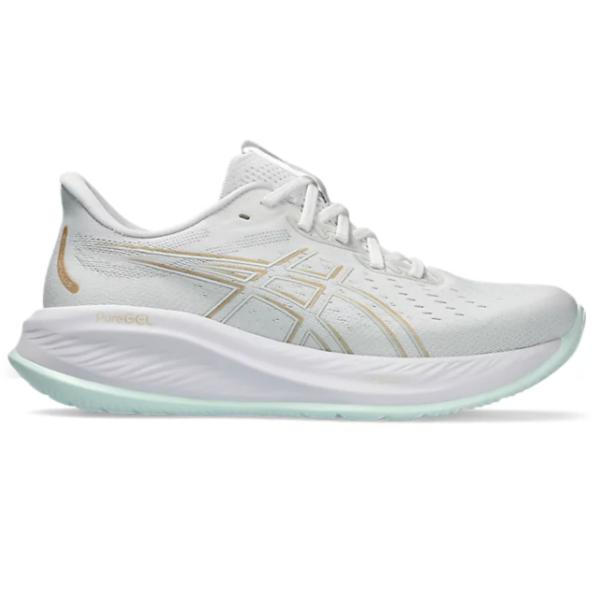
Product Highlights
- Neutral running shoe
- Lightweight gel cushioning
- Made with sustainable materials
- Sizes 6-16
Pros & Cons
Pros
- Multiple widths
- Gel cushioning
- Little to no break-in time
- Durable
Cons
- Slightly pricey
- Our testers aren't the biggest fan of the outsole
Bottom Line
The Asics Gel-Cumulus 26 is a great neutral running shoe for those looking for an everyday trainer for shorter treks. One frequent runner says they start to compress during longer runs.
As far as everyday running shoes go, the ASICS Gel-Nimbus 26 is a standout on our shortlist for runners of all gender identities. It features ASICS PureGEL technology for extra cushioning, but you don’t get stuck in it thanks to the rocker technology. Overall, it creates a smooth, cushioned ride for the casual runner’s daily run or more serious runners on longer runs.
Ben, a GGR tester and passionate runner, says, “These are a good fit for those with minor overpronation issues, as the PureGEL tech in the heel can help create a more shock-absorbing heel strike during landings, allowing you to comfortable transition to toe-offs.” They’re designed for a neutral arch but the added cushioning provides some support, earning it a 4 out of 5 in the stability category.
Rob Davis, a frequent runner and husband of GGR Head of Content Nicole Davis, agrees with Ben’s take. “These feel stable but not overly so,” Rob says.
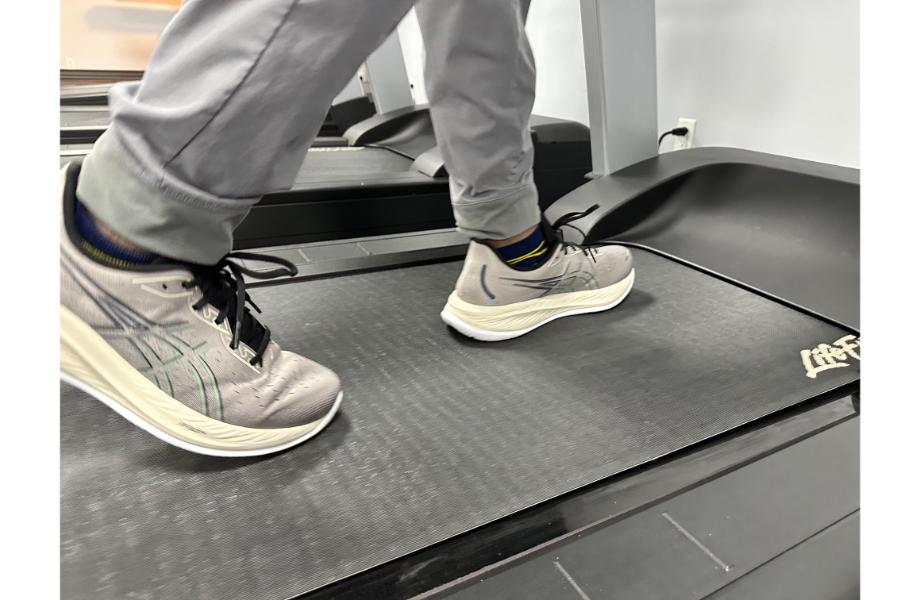
Rob also liked the adjustability and fit, saying, “Very comfortable, almost rivaling my beloved HOKAs. No break-in time, and really liked how they feel.” It earned a 5 out of 5 on adjustability. The comfort, the cushioning, and the overall fit are what make these a top pick for male or female runners.
The only issue Ben found was with the traction, a problem he’s seen in the best ASICS running shoes before. As he puts it, “I don’t think ASICS has nailed the wet weather traction just yet.” For those reasons, they might not be the best for road running on wetter days.
“The tread pattern can sometimes lose grip on slippery surfaces like a painted median line on the road,” Ben adds.
| Weight per Shoe | Men: 9 oz. Women: 7.8 oz. |
| Support | Neutral |
| Pace | Everyday running |
| Drop | 8 mm |
| Sizes | Men: 6-16 Women: 5-12 |
| Available Widths | Standard |
| Cushioning | High (M); Extra (W) |
Best Running Shoes for Flat Feet: TYR RNR-1 Runner
Best For: Casual runners who need extra support in the midsole
Best Running Shoes for Flat Feet
TYR RNR-1 Running Shoes
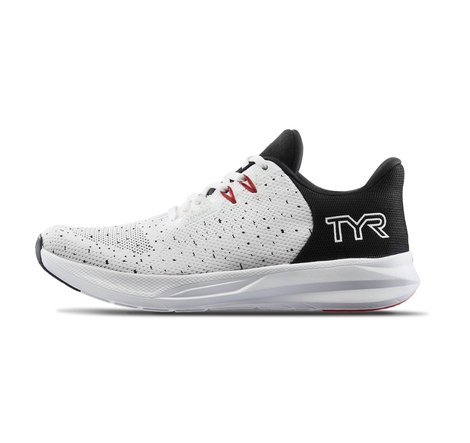
Product Highlights
- Second running shoe from brand TYR
- Thick, responsive midsole made of Surge NRG+ Foam
- Midsole supported with Pebax elastomers
- Knit mesh upper
- Reinforced toe box
- Gusseted tongue and molded sockliner
- 6 colorway options
- Great size range: M 4.5 / W 6 to M 14 / W 15.5
Pros & Cons
Pros
- Cushy, responsive midsole
- Ample room in midfoot and toe box
- Contoured insole
- Durable reinforced toe box
- Inclusive size range
- Grippy tread on outsole
Cons
- Feels a bit heavy for a running shoe
- Not great for speed work
- Not as breathable as many other running shoes
Bottom Line
The TYR RNR-1 Runners have a lot of promise for a running shoe. While they are slightly heavier than some other options, they've proven to be very durable in our testing, and we love the ultra-responsive midsole thanks to TYR's Surge NRG+ Foam and Pebax support. The outsole has also proven grippy in slick conditions, and there's plenty of wiggle room in the midfoot and forefoot for wider feet.
TYR might be better known for its swimwear, but the brand has made a pretty bold statement when it comes to running shoes. The TYR Techknit RNR-1 Runners have a low heel-to-toe drop at just 4 millimeters with a thick one-inch midsole made of Surge NRG+ foam. The foam contains Pebax, which contains a blend of polyethers for softness and polyamides for hardness. The result is a good hard-to-soft ratio that supports the needs of a low arch.
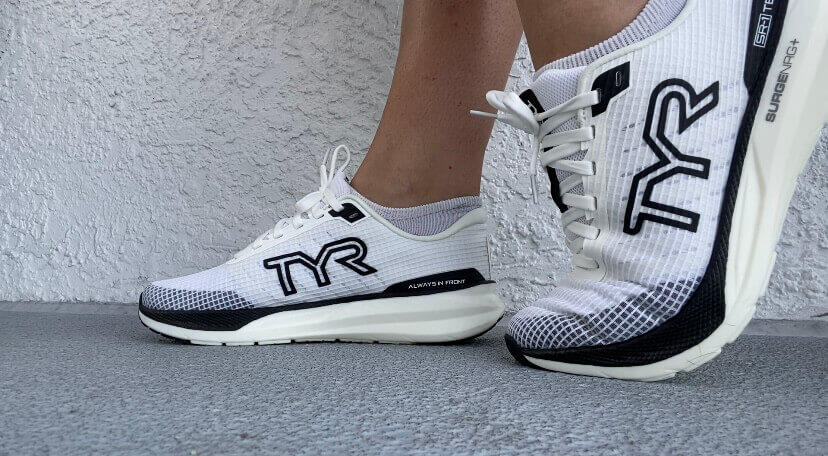
However, these aren’t a stability shoe that will prevent overpronation, to which some flat-footed runners are prone. What they offer is support with mid-level cushioning. The design helps to maintain a neutral arch position rather than trying to correct or prevent inward rolling. We gave it a 4 out of 5 on construction/durability and comfort/fit.
The TYRs offer a comfortable fit with a molded sock liner to prevent heel slippage. Though they have a knit upper, they can be on the warm side if you’re susceptible to heat buildup. They’re not necessarily a shoe for long runs as our tester, Amanda Capritto, a certified personal trainer, found them a bit heavy when she pushed distance.
She preferred them for shorter runs, cross-training (like HIIT workouts), and for comfortable daily wear.
It received high grades on its aesthetics, with Amanda appreciating the simpler design options. “I’m not a big fan of the flashy, multicolored designs that most running shoe manufacturers offer,” she says. “I’ve actually always wondered why plain running shoe colorways weren’t more common or popular.”
Related: Tips for Running in the Heat
| Weight per Shoe | 9.2 oz. |
| Support | Neutral |
| Pace | Everyday running, cross-training |
| Drop | 4 mm |
| Sizes | 4.5-16 (M); 6-17.5 (W) |
| Available Widths | Standard |
| Cushioning | Medium |
Best Neutral Running Shoes: Brooks Ghost Max 2
Good for: Runners with a neutral arch who like a well-cushioned run
Best Neutral Running Shoes
Brooks Ghost Max 2
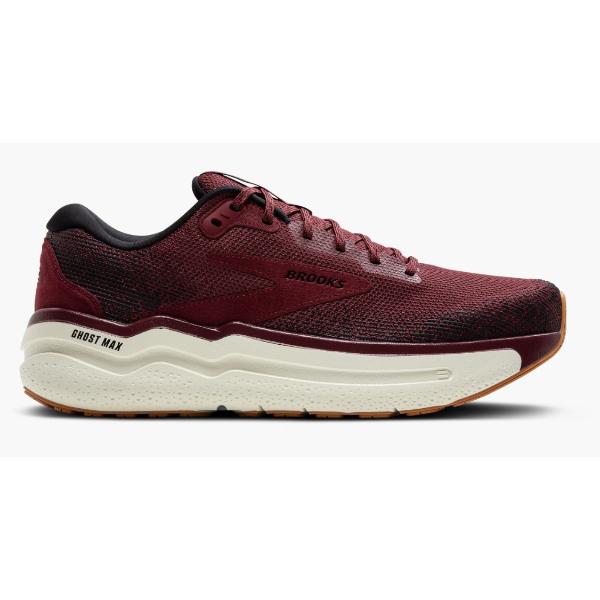
Product Highlights
- Neutral running shoe
- Max cushioning
- Three widths
- Brooks Run Happy Guarantee: Try for 90 days and return for no cost if you are not satisfied
Pros & Cons
Pros
- Brooks Run Happy Guarantee: Try for 90 days and return for no cost if you are not satisfied
- Wide base for stability
- Three widths
- Max cushioning
Cons
- Slightly pricey
- Complaints of a tight toe box
Bottom Line
The Brooks Ghost Max 2 is a worthy sequel to the popular running shoe that's perfect for people looking for a neutral option that comes with maximum cushioning.
The Brooks Ghost Max 2 has the high stack cushioning of the Max 1, except it’s made of a nitrogen-infused foam that brings added durability to the soft cushioning. This foam keeps the weight down and works as part of the shoes’ rocker design to move your foot from heel to toe more efficiently.
Otherwise, this shoe has all the same pros as the Max 1. Ben, a trusted GGR tester and passionate runner, says he uses the Ghost Max for longer runs and recovery days. It’s a top choice for neutral runners but keep in mind that it doesn’t have the stability features to support overpronation.
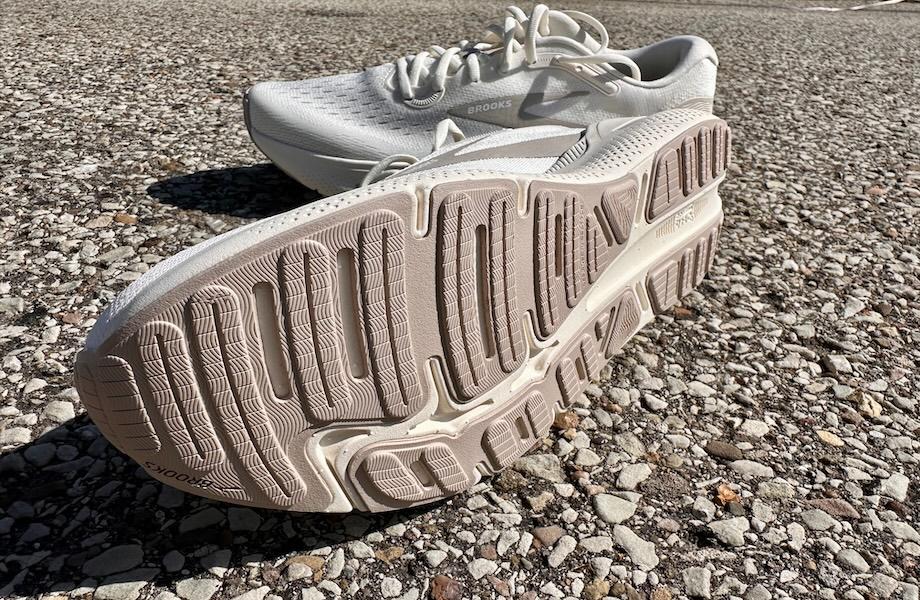
While this isn’t a stability shoe, it has a wide base that feels solid over a variety of terrain. “I felt plenty comfortable in these running shoes with no adjustments needed across my gait,” Ben says, pointing out it can help with proper running form. I appreciated the wider base that helped retain that sense of confidence when banking through turns or changing directions, too.” The wider base earns it a 4 out of 5 for stability.
Ben also gave the outsole a 4 out of 5, though he admitted he didn’t put them to the test on rainy days. “I didn’t feel any sense of slippage during my jogs, although I will say that I wasn’t taking these Brooks shoes out in inclement weather — I had a white colorway that I preferred to keep as clean as possible.”
The toe box, he adds, is a perfect fit and scored a 5 out of 5. “The toe box fit just right, and the engineered mesh upper does have some stretch that can accommodate wider-footed athletes,” Ben says.
Aside from being one of the best Brooks running shoes, the Ghost Max 2 is also made in an excellent range of sizes and three different widths.
| Weight per Shoe | Men: 10.8 oz. Women: 9.7 oz. |
| Support | Neutral road |
| Pace | Walking, road running |
| Drop | 6 mm |
| Sizes | Men: 7-15 Women: 5-12 |
| Available Widths | Medium, Wide, Extra-Wide |
| Cushioning | High |
Best Trail Running Shoes: HOKA Speedgoat 6
Good for: Rugged terrain and trails, especially if you like HOKA-level cushioning
Best Trail Running Shoes
HOKA Speedgoat 6
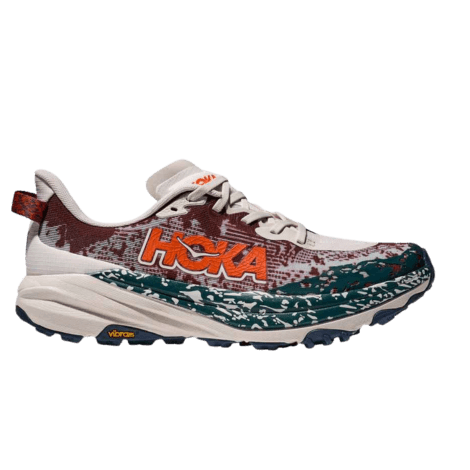
Product Highlights
-
HOKA offers the Speedgoat 6s in standard, GORE-TEX, and Mid GORE-TEX variations.
-
Our testers admire the grippy underfoot sensations made possible by the Vibram Megagrip outsole.
-
The lighter, more responsive midsole foam strikes the perfect blend of comfort and springiness.
-
The Speedgoat 6s boast an internal support chassis for better security and lockdown for tackling uneven terrain.
Pros & Cons
Pros
- Wide range of colors and styles
- Vibram Megagrip outsole
- Breathable, comfortable dynamic vamp upper
- Approachable price point below $160
Cons
- Mesh-like upper doesn’t bead water well
- Less ideal for more technical terrain
- GORE-TEX options can be expensive
Bottom Line
An iconic profile in its own right, the Speedgoat 6s from HOKA feature a lighter frame and redesigned dual vamp upper for improved breathability and comfort. Of course, though, these trail running shoes still retain that performance-laden sense of traction thanks to the Vibram Megagrip outsole.
HOKA’s Speedgoats have long been one of our favorites at GGR. We haven’t gotten our hands on this latest iteration, the Speedgoat 6…yet. But we’ve tested plenty of the best HOKA running shoes and predecessors to have a pretty good idea of what to expect. This shoe is highly comparable to the Speedgoat 5, which our tester Ben has used for routine trail runs and long-distance treks. One of the Speedgoat’s strengths is the balance of stiffness and cushioning, which you need over rough terrain.
The Speedgoat 6 features more cushioning for a slightly softer ride over the same stiff midsole. Ben found that the Speedgoat 5’s cushioning wasn’t quite enough for longer treks. “For trail running shoes, I appreciate this as it allows me to get a better sense of the trail’s conditions during my training,” Ben says. The past version scored a 4 out of 5 on cushioning.
The Speedgoat 6’s added cushioning has the potential to make longer distances more comfortable when running or just walking a mile.
While the 6’s woven upper is comfortable according to early reviews, it’s not quite as breathable as the previous model. That might not work in warmer weather, but it is an ideal option for cooler weather and mountain climates.
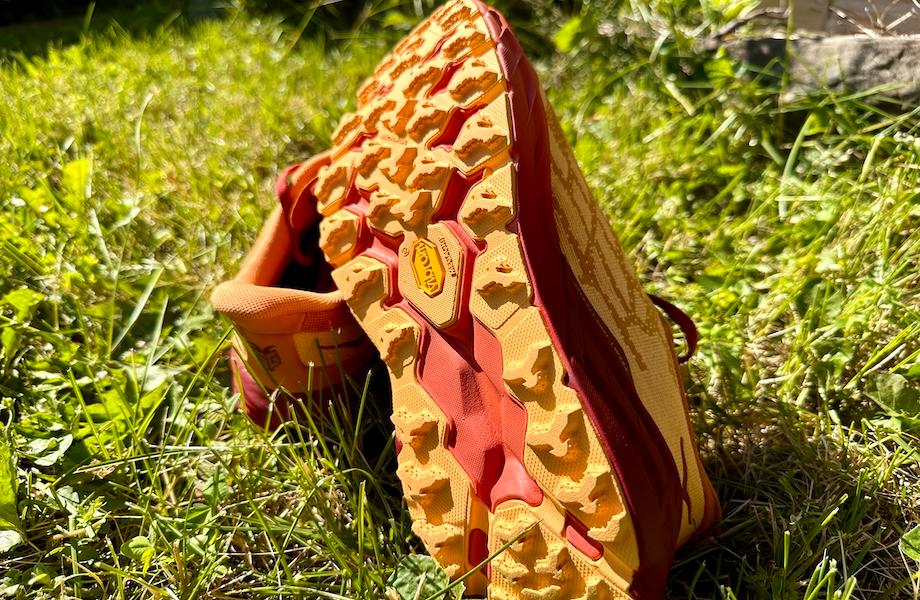
We also like the 5 mm lugs for the kind of grip you’d expect from the trail shoe. That grip can help you handle slippery, unpredictable terrain without too much trouble. “I also appreciate this sense of flexibility as it allows for me to roll through varying pitches and angles without feeling like I’m going to roll an ankle — you sort of just keep chugging along at your leisure,” he says. We gave the Speedgoats a 4 out of 5 on stability.
The size range is excellent for both men and women, and it comes in wide sizes, too.
RELATED: Post-Run Stretches
If the prior versions are any indication, these should earn a 4.5 out of 5 (or above) when it comes to construction and durability. “I’ve picked up a few scrapes and scuffs across the toe box overlays, but I wouldn’t say they’re detrimental to the integrity of the shoe itself,” Ben says of his Speedgoat 5. “Everything else has shown great durability even despite getting these sneakers muddied rather routinely.”
| Weight per Shoe | Men: 9.8 oz. Women: 8.2 oz. |
| Support | Neutral |
| Pace | Trail running, hiking |
| Drop | 5 mm |
| Sizes | Men: Women: |
| Available Widths | Regular, wide |
| Cushioning | Medium |
Best Running Shoes for Wide Feet: Altra Provision 8
Best for: Wide feet and overpronators
Best Running Shoes for Wide Feet
Altra Provision 8
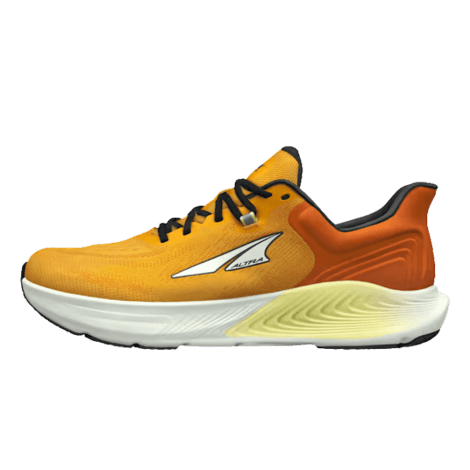
Product Highlights
-
As Altra’s stability silhouette, the Provision 8 features a medial GuideRail system to help promote neutral strides.
-
Like other Altra offerings, the Provision 8s feature a zero-drop design with a 28-millimeter stack height.
-
The updated Provision 8 profile boasts a refined, molded heel collar for improved comfort and fitment.
-
The Provision 8s are available in four colorways—fewer than other Altra shoes we’ve tested.
Pros & Cons
Pros
- GuideRail system can be beneficial to overpronators
- True to size, according to our tester
- Wide toe box for easier splaying
Cons
- GuideRails not necessary for all gait types
- Limited colorways
Bottom Line
In need of some added stability mid-run? The Altra Provision 8s employ the brand’s GuideRail system, serving as a medial support shelf to help protect against overpronation.
Anthony O’Reilly, GGR performance editor and certified personal trainer, tested this model since he has a size 14 4E foot size, and he had great things to say about it. They’ve got Altra’s zero drop design, arch support, guardrail, and comfortable midsole cushioning. And as O’Reilly puts it, they’re “Ridiculously stable.” It earned a 5 out of 5 in that category.
He goes on to say, “I love these things. I think the heel collar is one of the best I’ve ever tried on.”
The guardrail and midsole design give these best Altra running shoes their stable feel, with the guardrails helping guide the foot through each step to reduce overpronation. The midsole is made of InnerFlex, which has grooves that give the shoe flexibility while maintaining structure and support. And Altra’s natural foot-shaped last gives plenty of room in the toe box.
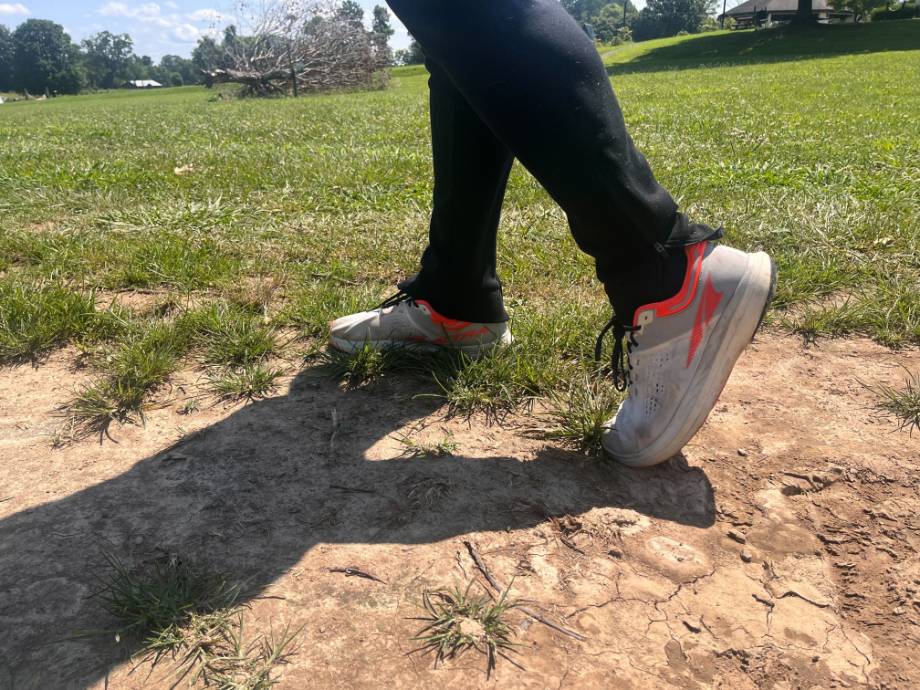
Altra describes the ride as soft, stable, and balanced, so they’re not over-cushioned, nor are these shoes a minimal model. They’re a great option for wide feet on everyday runs, though the traction isn’t designed for trails or rougher terrain.
The downside—they’re not the most attractive shoe on the market. O’Reilly may have (did) call them “a step up from being Dad Force 1s,” meaning they won’t win on the catwalk but we gave them a 4 out of 5 on appearance. But they’ll keep your feet comfortable, stable, and supported.
| Weight per Shoe | Men: 10.2 oz. Women: 8.27 oz. |
| Support | Stable |
| Pace | Road running, walking |
| Drop | 0 mm |
| Sizes | Men: 7-15 Women: 5.5-12 |
| Available Widths | Standard |
| Cushioning | Medium |
| Stack height | 28 mm |
Best Nike Shoes for Running: Nike Streakfly
Good for: Racing and training days when you want something light and responsive
Best Nike Shoes for Running
Nike Streakfly
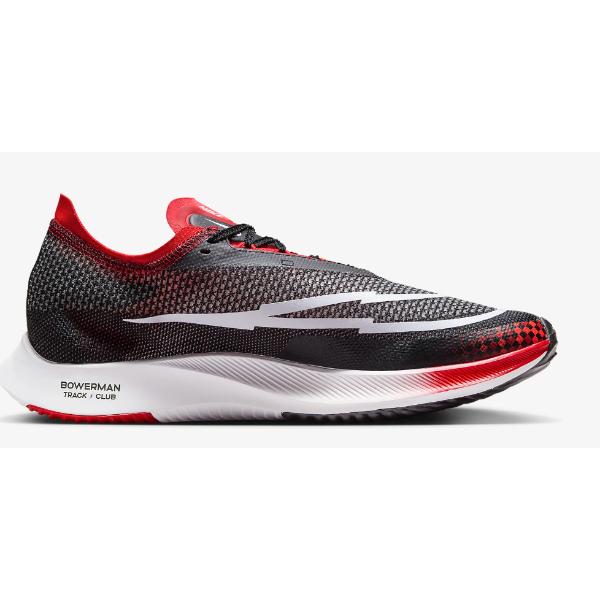
Product Highlights
- Lightweight
- Created using data from runners
- Foam midsole
- Only standard width
Pros & Cons
Pros
- Very light running shoe
- Breathable upper
- Created by gathering data from runners
- Offset lacing
Cons
- Some colorways are close to $200
- Only standard width available
Bottom Line
The Nike Streakfly is a lightweight shoe that was designed using data from runners, and has offset lacing that won't cause discomfort.
The Nike Streakfly goes minimal on the upper and narrow through the forefoot to cut down on weight. At only 6.5 ounces per shoe, it’s the lightest on our list, making these a great pick for race and speed days.
They feature a full-length ZoomX midsole with a lower stack height to minimize weight but maximize responsiveness. Our tester, Ben, says, “The midsole rebounded easily after each training session,” adding, “I do feel a balanced sense of rigidity across the midsole thanks to the more responsive ZoomX foam and midfoot shank.” He also gave a big thumbs up to the serrated laces, which helped lock down the foot. He says, “They continue to hold their cinch even after months of workouts.”
It earned a 4 out of 5 on stability.
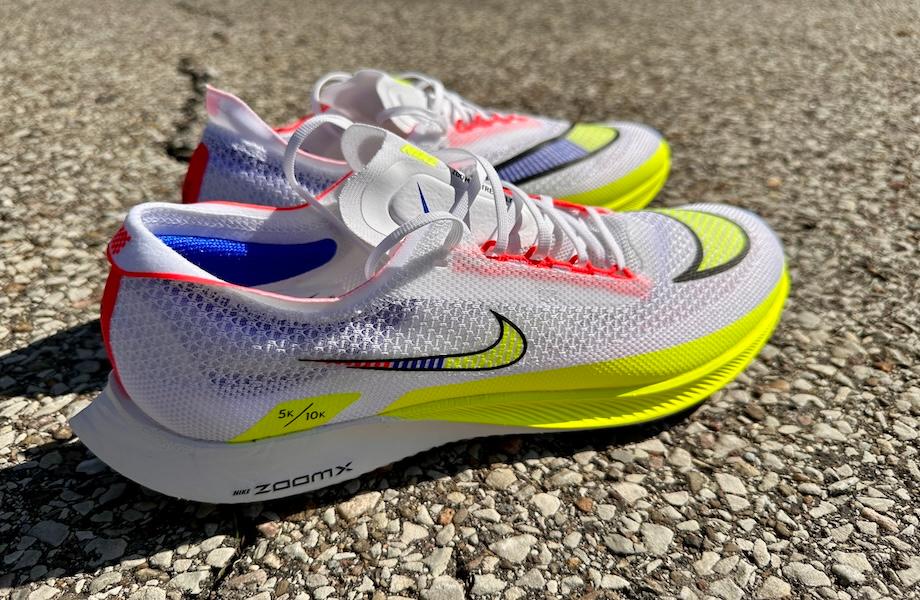
Durability is at a 4.5 out of 5, with the super thin upper resisting fraying after heavy use. However, that thin fabric will leave your feet soaking in wet weather. It’s complemented by the ZoomX midsole, which, as Ben puts it, “The ZoomX foam does a good job of flinging you forward, almost promoting a quicker pace that’s also highlighted by the more rigid midfoot shank.”
This shoe is fast and sleek. The narrow toe box is pretty typical of a speed shoe, but keep in mind that runners with wide feet may not be comfortable in this shoe. Ben gave it a 3.75 out of 5 in the toe box category.
“The toe box does taper inward, so I could see this being an issue for wider-footed athletes,” he says. “However, they fit my somewhat narrow feet well with enough room for toe splaying.”
| Weight per Shoe | 6.5 oz. (Men’s 10) |
| Support | Neutral |
| Pace | Competition races, speed training |
| Drop | Not disclosed |
| Sizes | Men: 3.5-15 Women: 5-16.5 |
| Available Widths | Standard |
| Cushioning | Light |
Best Cushioned Running Shoes: New Balance Fresh Foam v5
Good for: Long runs and tired feet
Best Cushioned Running Shoe
New Balance Fresh Foam X More v5
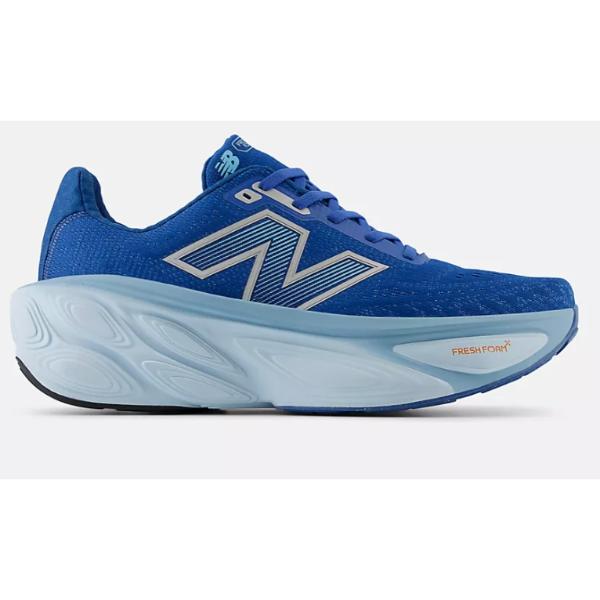
Product Highlights
- Neutral running shoe
- Three widths
- Adjustable lace closure
- Perfect for longer runs
Pros & Cons
Pros
- Super-soft cushioning for double-digit runs
- Three widths
- Breathable upper mesh
- Good traction
Cons
- Slightly pricey
- Long break-in period
Bottom Line
If you're looking for a running shoe that can support your feet for miles, the New Balance Fresh Foam X More v5 are our go-to pair of sneakers.
“These New Balances feel like running on clouds, making them a great option for long distances,” says daily runner Ben. And they should with their 32.5-millimeter stack height, part of the reason why this earned a 4 out of 5 on cushioning (we docked a point due to the high stack height that Ben says take some getting used to). Some max-stack shoes can feel squishy and slow down your cadence.
But the More v5 has a Fresh Foam X midsole that offers the energy return to balance out the material’s soft, shock absorption. “I enjoy the underfoot experience of this shoe, as the plush foam is comfortable enough for soft landings yet firm enough to avoid any pancaking out — an experience I’ve seen before that can quickly compromise your gait,” says Ben.
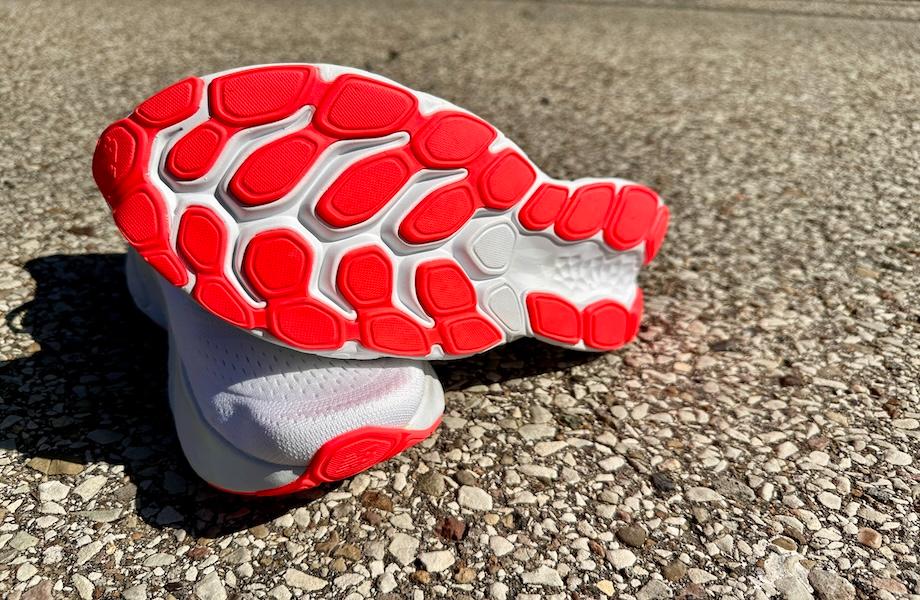
While you probably want to skip this shoe for speed training, this is one of the best New Balance running shoes for recovery days and those long runs that can leave your feet throbbing. Our tester also found the traction held up well in wet weather, which is important in a shoe that puts so much cushioning between you and the ground.
We go with Ben when he says, “I’d highly recommend these for long distances. The cushioning is enjoyable and resilient enough that it can carry you through those double-digit miles.” It might take a couple of runs to get used to the feel, but these shoes can take you for miles and miles.
| Weight per Shoe | Men: 11 oz. Women: 8.6 oz. |
| Support | Neutral |
| Pace | Everyday running, everyday wear |
| Drop | 4 mm |
| Sizes | Men: 7-16 Women: 5-13 |
| Available Widths | Standard, wide, extra-wide |
| Cushioning | High |
Best Long Distance Running Shoes: ASICS Novablast 4
Good for: Long-distance runners needing a durable and comfortable shoe
Best Long Distance Running Shoes
ASICS Novablast 4
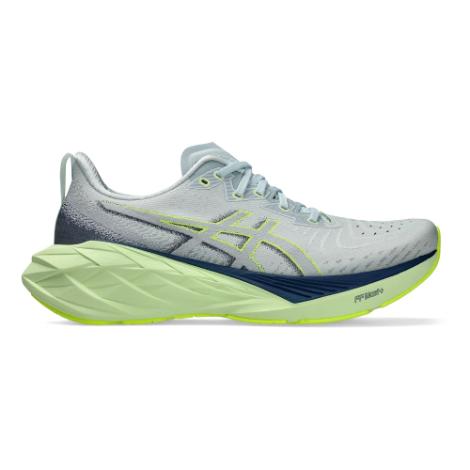
Product Highlights
-
Neutral road-running shoes
-
Responsive cushioning
-
Available in 12 colorways for both men’s and women’s sizes
-
Wide and standard version available
-
Available in men’s sizes 6-15 and women’s sizes 5-12
Pros & Cons
Pros
- Available in wide and standard widths
- Plenty of colorways
- Responsive cushioning
- Free shipping on orders over $50 for members
Cons
- A little pricey
- Not all colorways would work for casual daily wear
Bottom Line
The ASICS Novablast 4 running shoes are made for long-distance road running and daily runs. With a dozen colorways for both men’s and women’s sizing, there’s sure to be a design to fit your style. The responsive cushioning makes these shoes great for longer runs.
Just as one size doesn’t fit all when it comes to the best running shoes, one type of running shoe isn’t going to work for everyone; there’s plenty of variety in runs, from trail runs and competition races to short- and long-distance running. For those who prefer longer distances, our pick is the ASICs Novablast 4.
These neutral shoes have energetic cushioning to apply more bounce to a runner’s gait. Our tester Ben has had the Novablast 4s long enough for a few runs, although he’s used previous iterations of the running shoes. He rates the adjustments and comfort of the shoes a 4.5 out of 5, saying, “I think this midsole design hits the sweet spot between neutral and plush.”
Ben continues, “The updated foam has a good bounce to it, but it doesn’t pillow out at longer distances. There’s enough firmness in the Novablasts to facilitate sprints, but I wouldn’t hesitate to keep these shoes on for 10-mile excursions or longer.” And although the shoes are neutral, Ben felt supported during his runs, rating the stability a 4.5 out of 5.
In a myriad of different colors, the ASICS Novablast 4 has color schemes for everyone—from loud and vibrant running shoes to more neutral, muted shoes for everyday wear. Ben rates the aesthetics a 4 out of 5 for the versatile options. While the price of $140 is pricey, Ben says it’s par for the course pricewise, and these shoes won’t disappoint. “With the updated midsole foam and woven upper, I feel it’s the best rendition of the Novablasts to date,” he says.
| Weight per shoe | Men: 9.2 oz Women: 7.9 oz |
| Support | Neutral |
| Pace | Daily training, long-distance running |
| Drop | 8 mm |
| Sizes | Men: 6-15 Women: 5-12 |
| Available widths | Standard, wide |
| Cushioning | Maximum |
Best Running Shoes for Plantar Fasciitis: Saucony Guide 17
Good for: Runners who need some stability and cushioning in their everyday running shoes
Best for Plantar Fasciitis
Saucony Guide 17
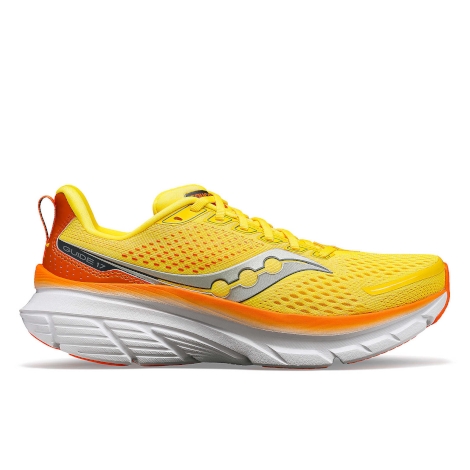
Product Highlights
- Vegan everyday running shoe with maximum cushioning
- Features Saucony’s PWRRUN technology to increasing cushion without increasing weight
- CenterPath Technology: To improve stability
- 8 women’s sizing colorways and 3 in men’s sizing
Pros & Cons
Pros
- Available regular and wide
- Uses recycled materials
- Positively reviewed by customers who struggled to find comfy wide shoes
Cons
- Limited colorways compared to competitors- especially men’s sizing
- Customers found they ran large
- Mixed reviews on the aesthetics
Bottom Line
The Saucony Guide 17 is a supportive everyday running shoe. It features Saucony’s PWRRUN technology that increases cushioning and softness without increasing weight. This shoe was very positively reviewed by multiple customers that had foot issues and struggled to find comfortable shoes. Multiple customers also noted the shoes run a bit large. The reviews were also mixed on the aesthetics of the shoe, complaining they are too “chunky”.
Plantar fasciitis is a common ailment in runners, often caused from overpronation. To relieve the pain, runners should look for a stable, supportive shoe—like the Saucony Guide 17. The Guide 17s strike a balance between a neutral and stable feel.
Our product tester and GGR Senior Editor Amanda Dvorak, ISSA-CPT, rates the stability a 4 out of 5, saying, “I myself overpronate when I run, and I feel supported in these shoes—although not quite as much as my running shoes from Brooks, which have been my usual choice for over a decade.”
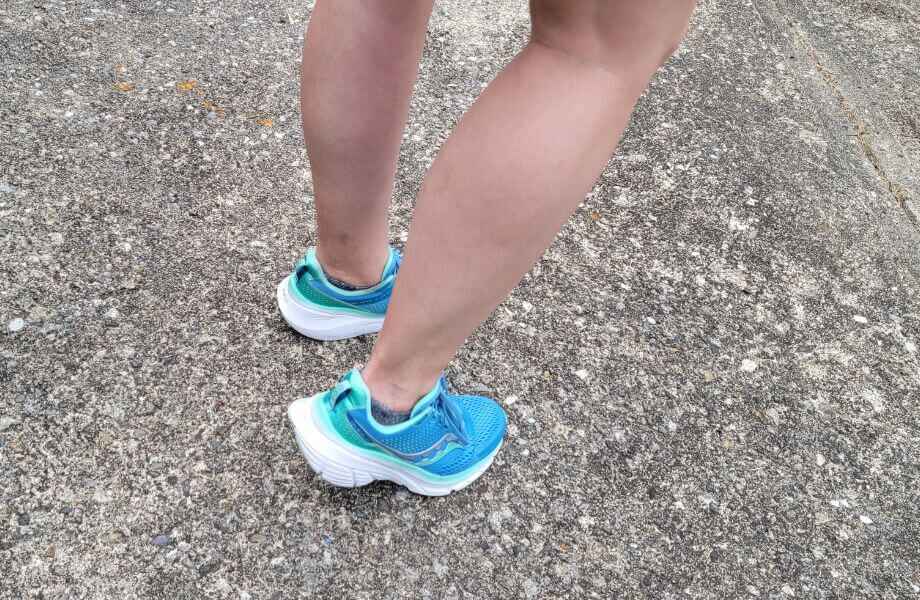
Saucony uses a PWRRUN midsole, which is a “plush and durable foam cushioning that puts comfort above all else,” according to their website. Amanda likes the responsiveness and cushioning, but it’s not too much. It’s held up well in the few weeks Amanda has had them, as she rates the durability of the shoes a 4 out of 5; we’ll be sure to update after the shoes have been broken in more.
As far as looks go, the Saucony Guide 17s are more on the neutral side, which Amanda appreciates in her running shoes. She rates the shoes a 4.5 out of 5, saying, “Although I typically wouldn’t wear running shoes out to dinner or anything, these look good for running shoes—maybe even better than other options available.”
The $140 price tag is comparable to other stability shoes Amanda has used before, so she thinks the Guide 17s are worth it, rating the value a 4.5 out of 5.
| Weight per shoe | Men: 9.4 oz Women: 8.1 oz |
| Support | Stability |
| Pace | Everyday running |
| Drop | 6 mm |
| Sizes | Men: 7-16 Women: 5-12 |
| Available widths | Regular, wide, extra-wide |
| Cushioning | Max comfort |
Best Stability Running Shoes: Brooks Glycerin StealthFit GTS 21
Good for: Overpronators who need a stable running shoe
Best Stability Running Shoes
Brooks Glycerin StealthFit GTS 21
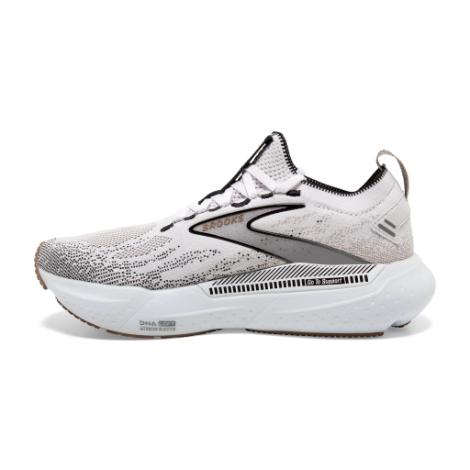
Product Highlights
-
Supportive road-running shoe
-
Provides super-soft cushioning
-
10-mm midsole drop
-
Made partly from recycled materials
Pros & Cons
Pros
- Supportive GuideRails system
- Super-soft cushioning
- Made with recycled materials
Cons
- Pricier shoes
- Only 1 colorway
Bottom Line
The Brooks Glycerin StealthFit GTS 21 are the stability version of the Glycerin 21s. Made with their GuideRails Go-To-Support system, these provide a lot of stability and responsive cushioning. Available in only one colorway, these shoes are made partly from recycled materials. They’re best suited for running on roads.
If you find yourself overpronating your ankle, we recommend the Brooks Glycerin StealthFit GTS 21. These shoes are the stability version of the Glycerin 21s, which are a neutral shoe. The GTS 21s provide support through the Go-To-Support GuideRails system, adding support to the ankle and heel throughout your run.
Our tester Ben is known to supinate, and even he felt support underfoot. “The support isn’t too rigid or corrective, either,” he adds, “making the StealthFit GTS 21s a good fit for those searching for their first pair of stability shoes. I think of them as an over-the-counter corrective footwear—not as potent as prescribed stability shoes, but they can get the job done for most needs.” He rates the stability a 4.5 out of 5.
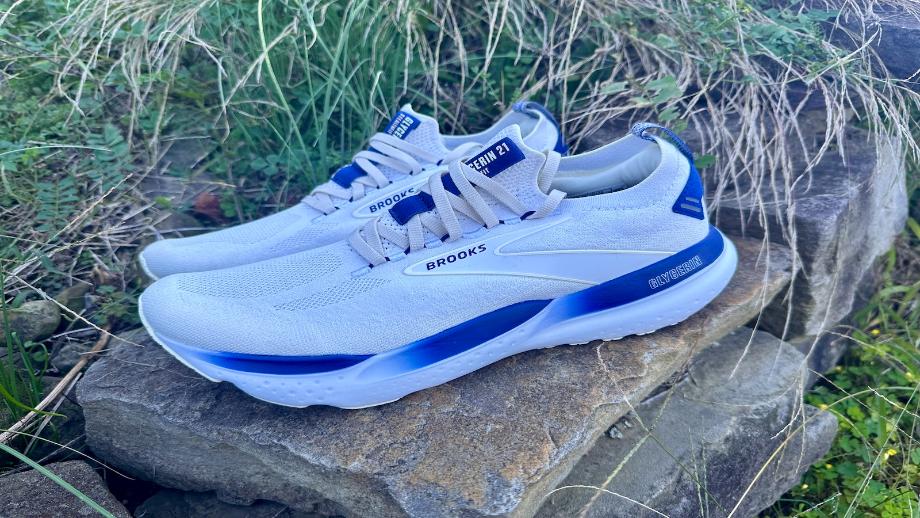
Ben, who has used plenty of running shoes over the years, was impressed with the DNA Loft v3 cushioning used in the midsole. “While there isn’t a high stack height to give the visual aesthetic of plush cushioning, DNA Loft v3 is one of the softest midsole foams I’ve had over the past few years,” he says. He also notes that it’s light and energetic, but it still keeps its support and integrity when landing and pushing off strides. He rates the comfort and cushioning a solid 5 out of 5.
These shoes are designed for road running, although Ben notes that the shoes have held up on some more slippery terrain, like wet asphalt. Still, he recommends a different shoe for trail running or loose gravel. “You can think of these as street tires—pretty solid, but not the best option when conditions turn for the worse,” Ben adds.
| Weight per shoe | Men: 10 oz Women: 8.9 oz |
| Support | Stability |
| Pace | Everyday running, shorter and longer distances |
| Drop | 10 mm |
| Sizes | Men: 7-15 Women: 5-12 |
| Available widths | Medium |
| Cushioning | Most Cushioning |
Best Running Shoes for Beginners: Nike Pegasus 41
Good for: Beginners who are looking for a solid pair of running shoes
Best for Beginners
Nike Pegasus 41
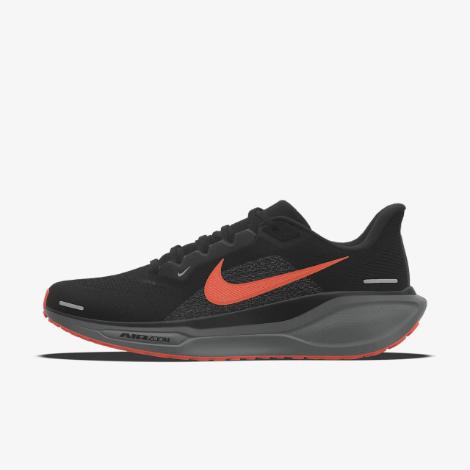
Product Highlights
-
Road running shoes made with sustainable materials
-
Available in regular and extra-wide fits
-
Multiple colorways or a design-your-own feature
-
10-mm heel drop
-
Waffle-inspired rubber outsole for traction and flexibility
Pros & Cons
Pros
- Multiple colorways
- Can personalize or design your own shoes
- Made with sustainable materials
- Regular and extra-wide fits
- Responsive cushioning
Cons
- On the pricier side of running shoes
- Some customers say the fit is snug
Bottom Line
The Nike Pegasus 41 are neutral road running shoes available in a variety of colorways; plus, you can design and customize your own colorway. Made with responsive cushioning, these shoes are also made with sustainable materials, being built with at least 20% recycled content by weight.
The Nike Pegasus 41 are our best running shoes for beginners because they’re well-rounded. These are kind of the Goldilocks of running shoes—great for mid-distance runs, not too short and not too long. This is the length that many beginning runners would find themselves, so it’s a great starting point.
“These are your quintessential neutral running shoes,” says our product tester and avid runner Ben, who has used the Pegasus 41s regularly after their release in June of 2024. “Still, even though it’s not marketed as a stability shoe, I feel the ReactX foam midsole provides adequate support for regular workouts.” He recommends more supportive shoes if you need more rigid support though .He rates the stability and performance of these shoes a 4 out of 5.
The outsole is a waffle-inspired pattern made of rubber. Because it doesn’t have any external lugs, Ben recommends keeping these runners on the road and off the trails. “I don’t foresee the pattern being very useful on more aggressive terrain,” he says.
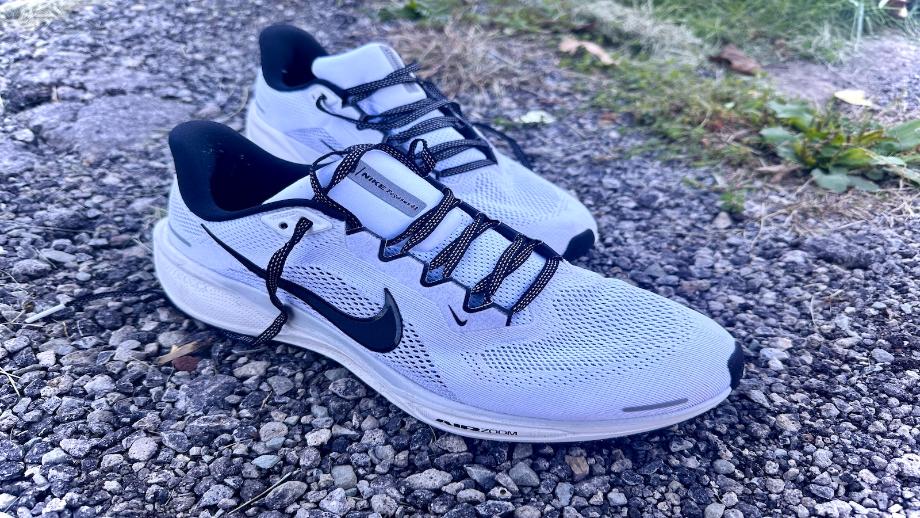
Ben rates the appearance and design a solid 4.5 out of 5, adding, “Nike always presents a great mix of colors in their Pegasus lineup. There’s bright, vibrant hues and subdued minimalist colorways to please different styles and personalities.” While he wouldn’t wear every colorway as everyday wear, there’s plenty of options for a more neutral look that’d match jeans or shorts.
Beginning runners may want to wear these on and off the track field, and the shoes have held up in Ben’s experience, who has worn them for several workouts and for social occasions, too. He rates the construction a 4 out of 5. “I’ve seen no signs of wear and tear, but I have done my part in trying to avoid situations where I know my shoes will be trashed,” he mentions.
| Weight per shoe | Men: 10.4 oz (size 10) Women: 8.8 oz (size 8) |
| Support | Neutral |
| Pace | Daily running, short races |
| Drop | 10 mm |
| Sizes | Men: 6-15 Women: 5-12 |
| Available widths | Regular, extra-wide |
| Cushioning | Responsive |
Other Running Shoes We Tested
Several pairs of running shoes that we tested didn’t make our list. We liked some of them, but just didn’t think there was anything particularly special about them. Others were a hard no. Here’s a quick look at everything we tested.
Altra Vanish Tempo: We think these shoes could work for the right person—for example, they have plenty of room for those with wide feet—but they weren’t a favorite. According to our tester, they work well on asphalt and running tracks and treadmills, but don’t do so well in nature.
Nike Air Zoom Pegasus 39: As we mentioned earlier, Anthony is a Nike super fan, but these were just average in his opinion. “If you want something that will feel supportive, keep your feet cool and comfortable, and look good, this is it. If you’re looking for the crème de la crème, look elsewhere,” he says.
ASICS Metaspeed Sky+: These running shoes are super lightweight and have a lot of grip on the bottom. This makes them ideal for trail or road running, but not trail running. Caroline says they almost have too much bounce and weren’t very comfortable, so we’re hesitant to recommend them, especially with the $250 price tag.
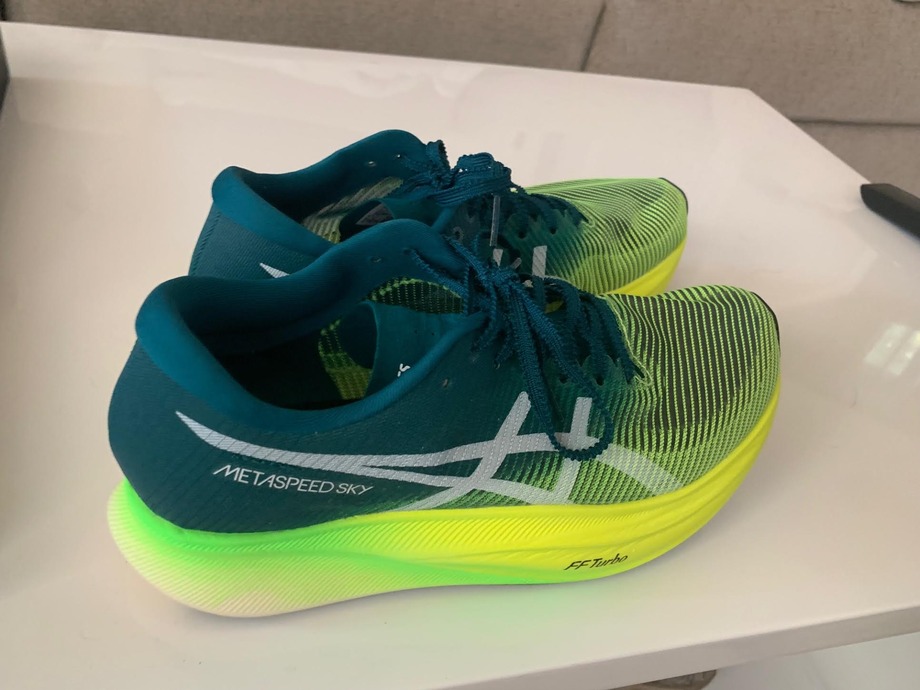
NOBULL Ripstop Runner: The NOBULL Ripstop Runners are lightweight and stable, with a dynamic lug pattern that makes them suitable for both indoor and outdoor training of all kinds. There’s nothing really wrong with them, but they’re better for a narrow to average foot and probably wouldn’t work well for a wider foot.
Nike Free Metcon 4: Nike Metcons are a go-to CrossFit shoe, but this pair is intended to be more of a runner, yet has a narrow toe box (and runs small), so Kate wasn’t impressed with how they felt. However, if you order a shoe size up and like foot hugs, you may love this shoe.
Saucony Kinvara 13: These shoes are very lightweight and have a 4-millimeter heel-to-toe drop, which makes them the best Saucony running shoes for explosive movements. While they’re not super cushion-y, they feel good when on and have plenty of support. Ultimately, they didn’t make the list because they gave GGR Nicole a huge blister and just didn’t edge the others out.
NOBULL Runner+: The NOBULL Runner+ sneakers have a very thick midsole, which can be a good or bad thing depending on what you’re looking for. Our tester felt unstable running in these compared to her Brooks, but says they would probably make a great everyday shoe for those that are on their feet all day.
On Cloudventure Waterproof Running Shoes: Overall, our testers liked these shoes, but they just didn’t really compare to the Cloud Xs, the best On running shoes in our opinion. They are more waterproof, though, so if that’s your main need, you might love them. We do recommend ordering at least a half-size up though.
Nike Zoomx Vaporfly NEXT%: Amanda tested these running shoes and said that she was disappointed because she had very high expectations. On her first run in them, she found herself with achy shins within a mile—and actually felt as if she had to adjust her natural stride to fit the shoes, not the other way around. They have a basic, thin rubber outsole that isn’t super grippy, but they’re supposed to increase your stride and propel you forward. Ultimately, we don’t think they’re worth the near-$300 price tag for most people.
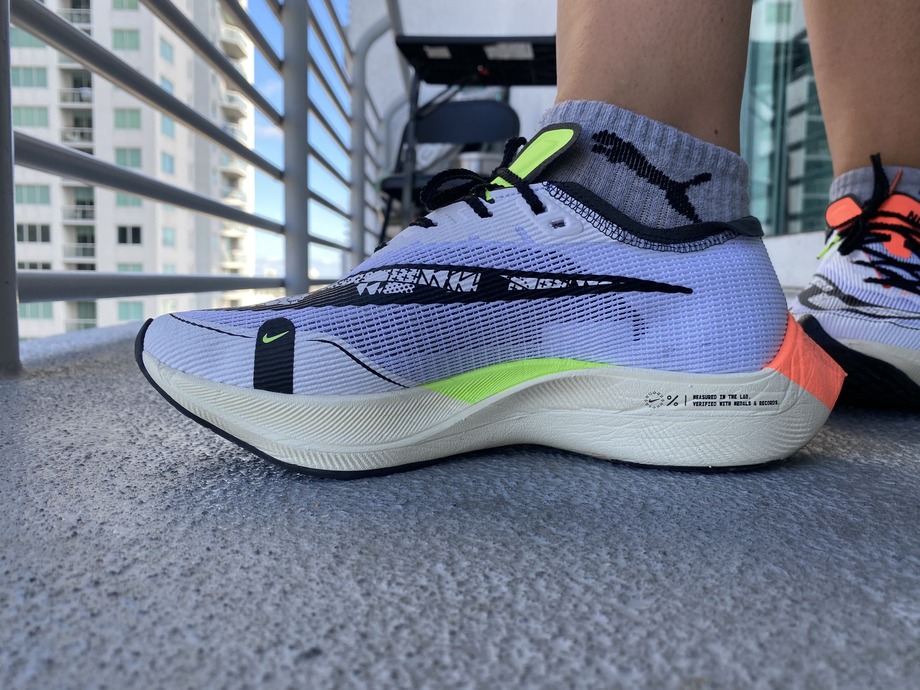
Lululemon Chargefeel: Caroline was pleasantly surprised by these running shoes, but there was nothing that really made them stand out against the others. They do look good though, and come in mid and low options so you have some choices.
New Balance Fresh Foam 880: Like Brooks, New Balance is another quintessential “dad shoe.” They don’t look great, but they’re comfortable and feel durable. They do have a lot of cushion so if you prefer a more minimalist running shoe you probably won’t like them. If you’re looking for a decent shoe that does the trick, you’ll be happy with these.
Adidas Ultraboost 22: Caroline says these have a lot of foam on the bottom — Adidas calls this LEP (linear energy push) — and it’s meant to increase forefoot bending stiffness to give you a more responsive stride. While comfortable, we think they’re a bit overpriced for what they are (around $200).
How We Picked and Tested
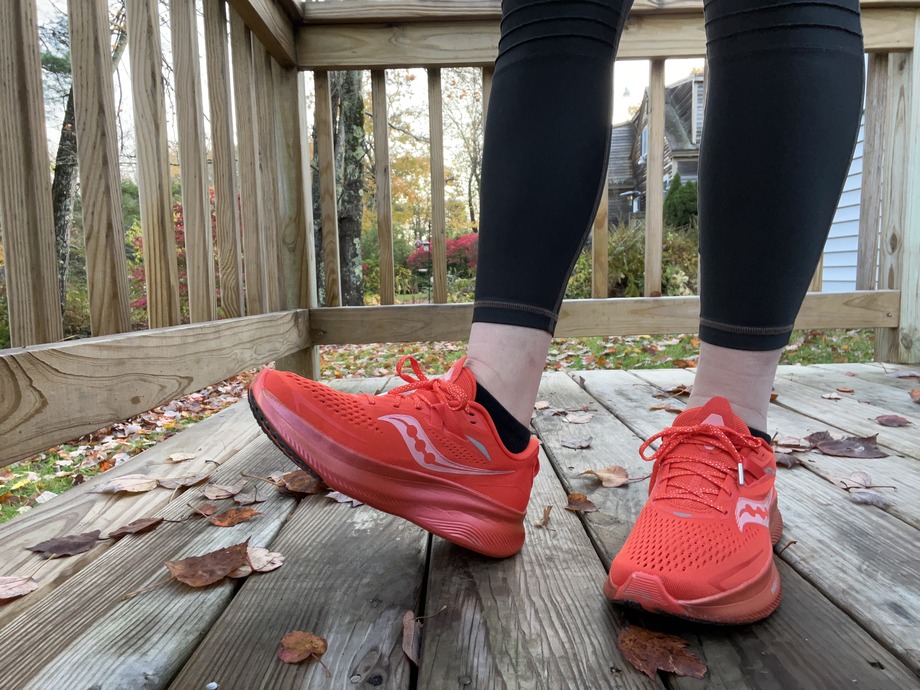
We tested a lot of running shoes over a period of several months. When deciding which running shoes to test, we considered user reviews, popularity, brand recognition, and any proprietary or standout features. If a brand claimed that their shoes had something majorly special about them, we wanted to test them to find out if it was true.
Among the shoes we considered were popular models, like Brooks Ghost 14s, Brooks Adrenaline GTS, ASICS Gel-Kayano 28s, and Nike Air Zoom Pegasus 38s, but ultimately we thought the 20 pairs we chose to test made the most sense.
We landed on well-known brands like Brooks, Nike, HOKA, and ASICS, as well as less mainstream pairs from NOBULL and On Running, and tested multiple pairs from many brands.
To test the shoes, we took them through a series of running workouts, from treadmill sprints to long-distance trail runs. We ran in a variety of different weather conditions, sloshing through puddles and powering through rugged terrain. We kept this up for several weeks, taking notes on construction, durability, stability, breathability, ergonomics, and appearance.
Benefits of Running Shoes
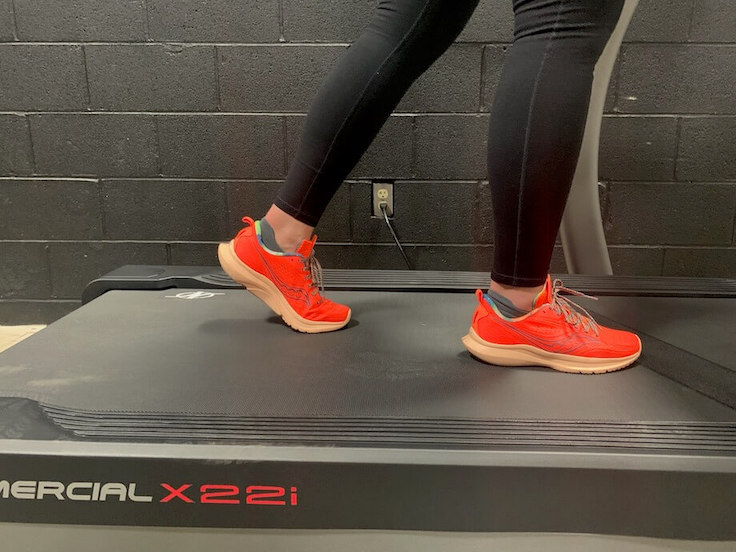
A good pair of shoes can make all the difference in your comfort and performance. There’s been a lot of research around this, but a March 2020 review in the Journal of Sports Science & Medicine1 succinctly put it all together, with these four major points:
- Choosing the right stiffness can improve performance.
- Softer midsoles can reduce impact and loading rates.
- Thicker midsoles can absorb shock and provide better cushioning.
- Minimalist shoes can improve running economy (the relation between your running speed and oxygen consumption).
What to Look for in a Running Shoe
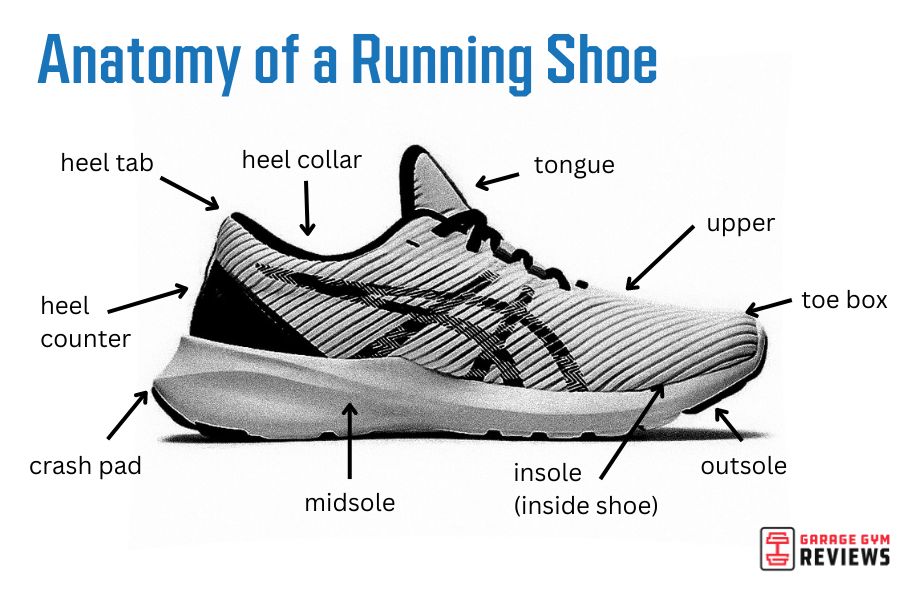
The general recommendation is to change your running shoe every 500 miles. As your running shoe wears out, it can lose its shock absorption, which can increase pressure in the foot and cause pain, according to an August 2011 report in BMC Research Notes2. So even if you have a decent running shoe now, you may have to look for new ones eventually.
When choosing a running shoe, consider these factors:
Terrain
The first thing to think about is where you want to run. Do you typically stick to the road and/or a treadmill? Or will you be hitting trails with rugged terrain? If the former, you can get a running shoe with a flatter, smoother bottom. If you’re running in unpaved areas or on uneven terrain, you want trail runners with bigger lugs to help improve your traction.
Cushion
Soft cushioning helps absorb impact from your footstrike and may feel more comfortable, but it can affect the stability of the shoe. If you want to feel like you’re running on a cloud and don’t mind giving up some of that stability, you can go for extra cushion. However, if your main goal is speed, you want racing shoes with less cushion.
Heel-Toe Drop
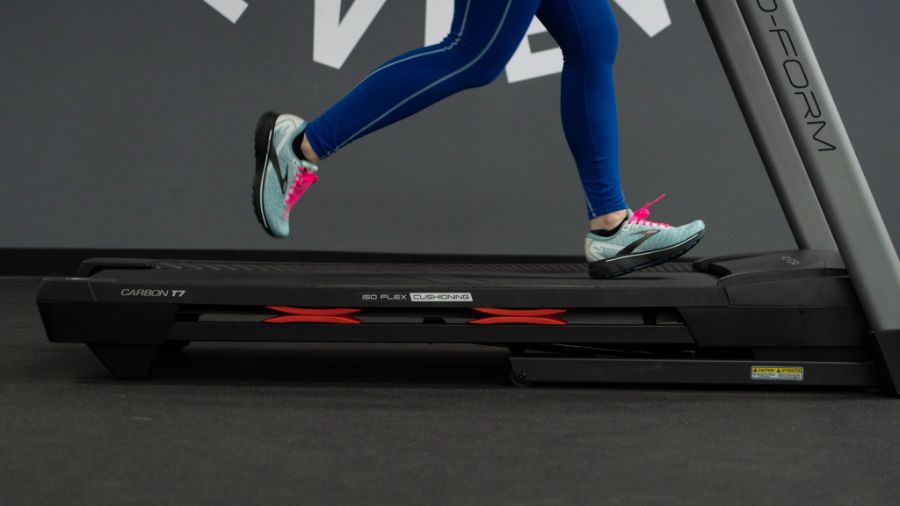
Heel-toe drop is the height difference between your heel and the ball of your foot when you’re wearing your running shoes. It really describes the difference in cushioning between the front and back of the shoe. There’s not one ideal heel-toe drop—it comes down to what works for you.
“A higher heel-toe drop (over 7 millimeters) is easier on the lower leg,” Amanda says. “This is best for runners who have Achilles tendon issues or who typically land heel first.”
On the other hand, a lower heel-toe drop (under 7 millimeters) is best for runners who land on the front or midfoot.
Gait
You’ll also want to think about your gait. Do you overpronate (roll your foot inward as you run) or under-pronate (put more weight on the outer edge of your foot)? This can change the type of running shoe you need.
You don’t really need specialized shoes for moderate gait alterations, but the best shoe for overpronation has extra arch support, while neutral shoes, or those with a broad base to help balance gait, are ideal for supination (or under-pronation).
If you’re not sure of your gait or want more guidance on how to choose the right shoes for you, you can work with a running coach or visit an athletic store that specializes in sneaker fittings.
RELATED: Best Running Shoes for High Arches
Foot Strike
Your foot strike is how your foot first makes contact with the ground. Foot strike can be one of three types—heel, midfoot, and forefoot. The right running shoes can help prevent pain or injury caused by your natural foot strike. Your foot strike may not cause problems, but you still need a shoe that supports your feet.
| Foot Strike Pros | Foot Strike Cons | Running Shoe Type | |
| Heel | Many shoe options because most are designed for heel cushioning | Increased impact on joints, particularly the knees | Cushioning that feels comfortable |
| Midfoot | Equally distributes impact across joints | Can put more stress on the arch and calves | Neutral shoe with up to 6 mm heel-to-toe drop |
| Forefoot | Quicker ground contact and better running efficiency | Puts strain on the toes and calves | Shoes with low heel-to-toe drop, preferably under 6 mm |
Most runners, especially recreational runners, hit the ground with their heels first, called a heel strike. Heel striking puts more impact on the joints and knees,¹ though it doesn’t necessarily guarantee joint problems. Many types of shoes can accommodate heel strikers because they’re designed with adequate cushioning in the heel. Those who heel strike can try a variety of shoes, looking for a style with a level of cushioning that prevents heel pain. For some, that’s a maximalist shoe, while others may only need light to medium cushioning. However, minimal shoes may be more likely to cause heel pain.
A midfoot strike puts near equal force on the heel and forefoot. A midfoot strike puts more stress on the calves and arch of the foot than heel striking. Runners with this type of strike do well with a neutral shoe with up to a 6 mm heel-to-toe drop. Too much heel cushioning can get in the way of the natural gate, so midfoot strikers might need to avoid a high stack from a maximum cushioned shoe.
A forefoot strike is when the forefoot or the ball of the foot strikes the ground first. While midfoot and forefoot striking is often found in elite, competitive runners, it’s not necessarily more economical unless it’s your natural gait. A shoe that feels comfortable with a low heel-to-toe drop usually works well for this type of runner. Shoes with a high heel-to-toe drop or a high stack/cushioning can alter the natural running gait and lead to pain or injury.
Arch
The height of your arch affects how your foot absorbs the forces associated with running. The foot should naturally pronate (roll inward slightly) and the arch flex upon hitting the ground to help absorb impact. However, running shoes can work for or against your natural arch height.
A low arch, or flat foot, often tilts inward toward the arch. If someone with a low arch looks at their footprint in the sand, they can make out most of the foot’s shape from toe to heel. This arch type may have trouble with shock absorption because the arch cannot flex enough to absorb impact forces. Many, though not all, runners with a low arch overpronate, which means their feet and ankles roll inward.
Some people with low arches can run without any pain. For those who do experience pain, a stability shoe (and possibly one) with a heel counter to lock the heel in place can help support your low arches and prevent overpronation.
A neutral arch neither overpronates nor supinates (rolls outward). The footprint of someone with a natural arch will show a narrowing near the midfoot. Someone with a neutral arch can usually wear any shoe that feels comfortable. They don’t typically need maximum cushioning or extra stability features.
If you were to look at the footprint of someone with a high arch, there would be a forefoot and heel with a narrow piece connecting the two. Some people run with a high arch without any trouble. For others, it can cause supination or rolling outward of the foot, making them more susceptible to ankle injuries. Shoes with good arch support and possibly a heel counter to prevent outward rolling are often helpful and more comfortable.
Style
Of course, style is a consideration, too. What kind of running shoes do you feel good in? Do you like rocker-style shoes with a lot of cushion, like HOKAs? Or would you rather a more traditional-looking running shoe, like the ASICS Gel-Nimbus 24s? There is a functional aspect to how running shoes are made that affects the style, but it’s partly a cosmetic choice, too.
Mistakes to Avoid
The right shoe can make or break your running success. Here are a few tips on what to avoid when choosing your shoes:
- Measure your foot length and width (at the widest part). Shoe size designs vary and knowing your measurements can help you get the right size as you’re trying different brands and models.
- Do not buy shoes that are too tight. Your feet swell when you run, and tight shoes can create pressure points and discomfort.
- Do not buy shoes that are too loose. Distance runners whose feet can swell a half or whole shoe size might be the exception. But don’t go too big because your foot will slide around in the shoe and compromise stability.
- Don’t skip the practice run when you’re at the store. Pay attention to the fit. Does your heel slip, or are there any pressure points?
- Don’t try on shoes in the morning. Try on shoes in the afternoon or evening when your feet have swelled.
FAQs About the Best Running Shoes
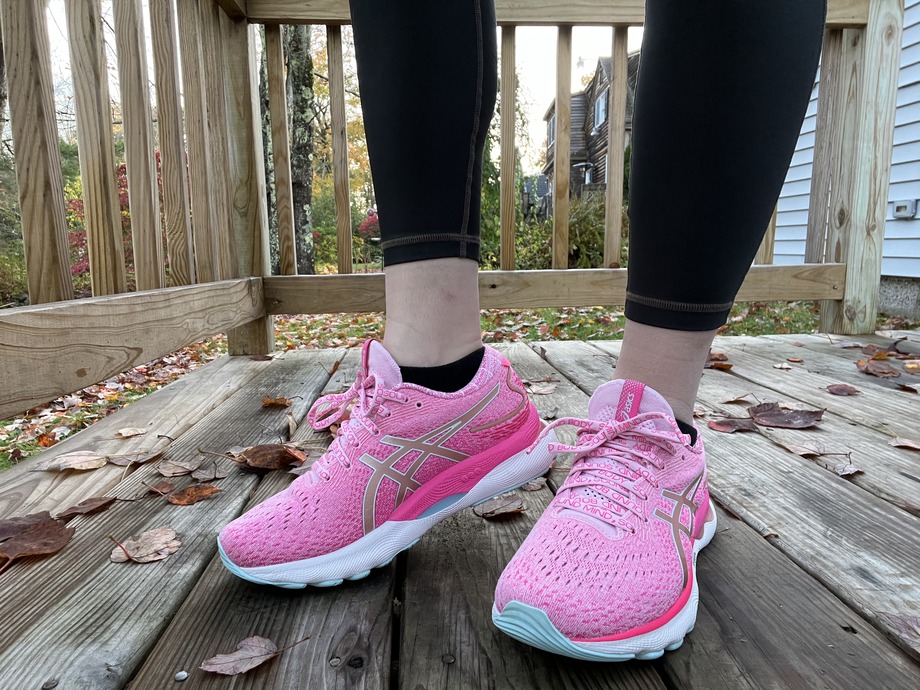
Here are some answers to commonly asked questions about running shoes.
Which brand of running shoes are the best?
The answer to this question really depends on who you ask. We have die-hard Nike fans on our team and others that are team Brooks. After our testing, Brooks came out on top because it’s a really versatile shoe that can work for many people, but if you have specific needs, you may want a different brand. For example, HOKA may be best for wide feet or those who need extra shock absorption.
Which type of shoes are best for running?
There are three main types of running shoes: road-running, trail-running, and cross-training. Which one is best will depend on your fitness goals and activities.
Road running shoes are designed for pavement or a smooth surface like a treadmill. Because of this, they have flatter soles and a more lightweight design.
Trail-running shoes are made for more rugged terrain. They usually have stiffer midsoles and more heavy-duty lugs (the treads on the bottom of the shoe) to help grip uneven terrain.
Cross-training shoes are built for versatility. They typically have a lower heel-toe drop and are less flexible to allow for movement in different directions.
You may also see shoes classified as men’s running shoes and women’s running shoes, but for the most part, the only differences lie in the sizing and colorways.
RELATED: Cross-Training for Runners
What are the most comfortable running shoes?
The most comfortable running shoes should have plenty of cushioning and support for longer runs, although they may not be ideal for shorter, faster runs. Our choice for the best cushioned running shoes—the New Balance Fresh Foam X More v5—has a plenty of cushioning leading to a massive 32.5-millimeter stack height; our tester felt like he was jogging on clouds.
Are Hoka sneakers good for running?
Hoka is a great brand, and many runners swear by them. They offer a wide range of shoes that lean toward maximum cushioning. These shoes are often preferred by those with plantar fasciitis, Achilles pain, and/or arch problems. They’re also a good choice if you’re on your feet for long periods. BUT they’re not perfect for everyone. The high stack height and extra cushioning can cause gait issues and discomfort for some runners. See how they feel to you, knowing that they may or may not work with your biomechanics.
References
1. Sun X, Lam WK, Zhang X, Wang J, Fu W. Systematic review of the role of footwear constructions in running biomechanics: implications for running-related injury and performance. J Sports Sci Med. 2020;19(1):20-37. Published 2020 Feb 24.
2. Rethnam U, Makwana N. Are old running shoes detrimental to your feet? A pedobarographic study. BMC Res Notes. 2011;4:307. Published 2011 Aug 24. doi:10.1186/1756-0500-4-307


